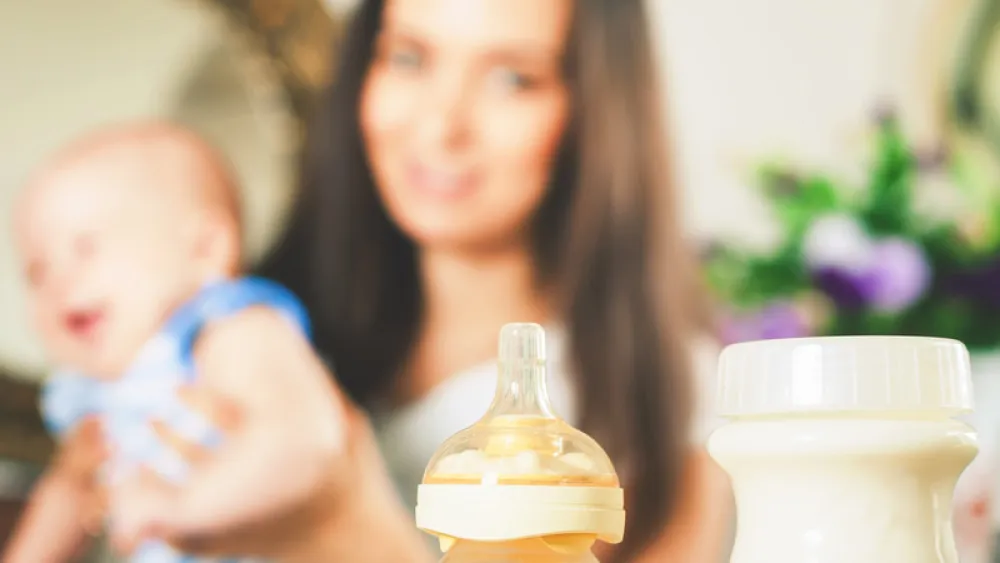




Family Health
Cleaning your Breast Pump


Preventing bacteria
Providing breast milk is one of the best things you can do for your baby’s health and development. It contains antibodies that help your baby fight off viruses and bacteria. Pumping your milk is one way to provide breast milk to your baby, however not properly cleaning breast pumps can mean introducing them to the dangerous bacteria you’re trying to help them fight.
Germs can grow quickly in breast milk or breast milk residue that remains on pump parts. Young infants are the most susceptible to bacterial infection as their immune systems are immature and not as capable of fighting off infection.
CDC recommendations
Earlier this year, there was a case of a premature infant who contracted a bacteria after drinking breast milk. The bacteria was traced to mom’s breast pump. Following this event, the Centers for Disease Control and Prevention (CDC) came out with new recommendations for cleaning breast pumps to prevent infections.
Before every breast pump use:
- Wash hands with soap and water.
- Inspect and assemble clean pump kit. If tubing is moldy, discard and replace immediately. It is generally a good idea to get new tubing and parts prior to each new child.
- Clean pump dials and power switch.
After every use breast pump use:
- Keep a separate wash basin for the breast pump parts. The CDC does not recommend you use the kitchen sink to clean the pump supplies. The kitchen sink may have germs from other food prep.
- Have a dedicated cleaning brush that you use only to clean your breast pump parts.
- Use running water and soap to clean the parts that come in contact with breast milk. It is important also to scrub with a brush, not just to rinse them off.
- Let each piece and part air dry.
- Clean wash basin and brush.
Storing for the future
If your breast pump parts are dishwasher safe, you can alternately wash them in the dishwasher. Load them into a mesh laundry bag or plastic basket and run with soap in the dishwasher with hot water and a hot, dry, sanitizing cycle.
- Once dry, you may store the breast pump in a clean protected area until needed again.
- Sanitize the pump for extra germ removal. Sanitize the pump parts, wash basin and bottle brush at least once daily after they have been cleaned. They can be sanitized using boiling water, steam or in a dishwasher on a sanitize setting.
Storing Milk Safely
It is also very important to store breast milk safely. Current recommendations on storage for pumped breast milk include:
- Store milk in clean, screw-top bottles or in sterile breast milk storage bags.
- Clearly label milk with the date it is expressed, and use the oldest milk first.
- Do not save milk from a used bottle. Once a baby has drank milk from a bottle, the milk has been contaminated by bacteria from baby’s mouth. This milk cannot be used for a later feeding.
- To thaw milk from the freezer, either thaw it in the refrigerator overnight or swirl it in a container of warm water. Do not use the microwave or stove to thaw frozen breast milk.
Refrigeration
Once milk is expressed, how long is it good for before refrigeration?
- Pumped milk may be stored on the counter for up to six hours. It should be kept cool. Place a cool towel over it to keep it cool.
- Pumped milk may be kept in the refrigerator for up to five days. It should be stored in the back of the refrigerator.
- Pumped milk may be stored in freezer for 3-6 months. Again, it should be stored at the back of the freezer.
- If you have a separate deep freeze, breast milk can be stored in deep freeze for up to 6-12 months. The oldest milk should always be utilized first.
Feeding your baby breast milk can be a lot of work at times, but it is the best thing for your baby. If you have questions about pumping or safe storage of breast milk, speak with your Methodist Physicians Clinic pediatrician.


